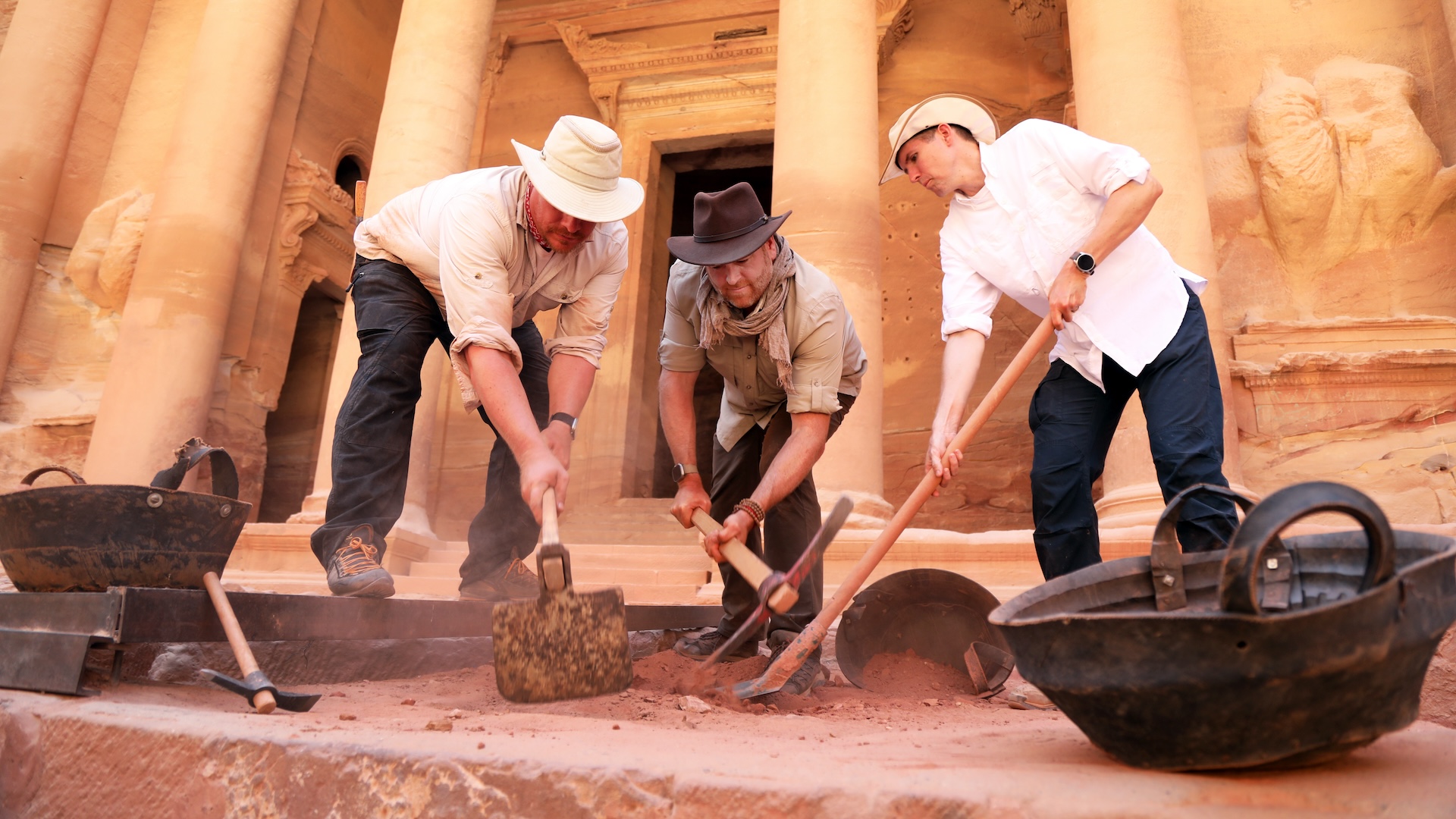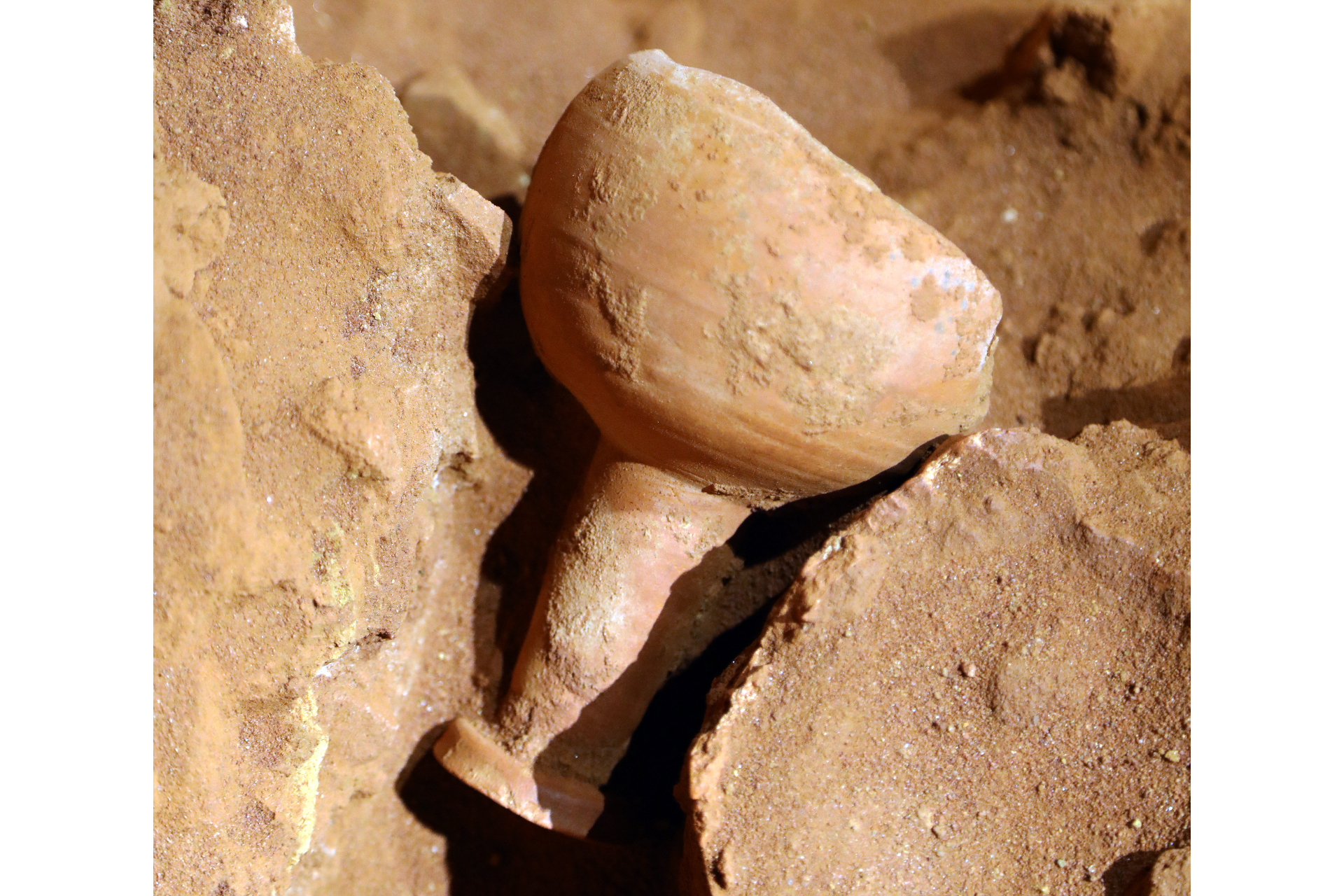2,000-year-old tomb holding 12 skeletons found at Petra where 'Indiana Jones and the Last Crusade' was filmed
Archaeologists have discovered a 2,000-year-old tomb containing the remains of 12 individuals at Petra in Jordan.

Archaeologists have discovered a 2,000-year-old tomb containing 12 skeletons beneath the "Treasury" in the ancient city of Petra in Jordan.
In Arabic, the Treasury is known as "Al-Khazneh," which translates to "the treasury of the pharaoh." The exact purpose of the Treasury is unclear, but it may have been a mausoleum for the Nabataean king Aretas IV Philopatris. Film buffs may remember it as the site where the "Holy Grail" — the cup that Jesus is said to have used during the Last Supper — was found in the 1989 movie "Indiana Jones and the Last Crusade."
While excavating the tomb, archaeologists recently unearthed the remains of pottery that was buried with the individuals. They found that one of the skeletons was holding a ceramic vessel resembling a chalice, according to a statement from the University of St Andrews in Scotland.
Sediments and materials from the burials date to sometime between the mid-first century B.C. and the early second century A.D., according to an analysis by Tim Kinnaird, a research officer at the School of Earth and Environmental Sciences at the University of St Andrews.
It's not clear who these 12 people were, and research into the tomb and its remains are ongoing.
Related: 31 ancient temples from around the world, from Göbekli Tepe to the Parthenon

Filling in the gaps
The tomb was discovered during remote sensing work carried out by Richard Bates, a geophysicist at the University of St Andrews.
Sign up for the Live Science daily newsletter now
Get the world’s most fascinating discoveries delivered straight to your inbox.
"The discovery is of international significance as very few complete burials from the early Nabataeans have ever been recovered from Petra before," Bates said in the statement. "The burials, their goods, and the human remains can all be expected to help fill the gaps of our knowledge in how Petra came to be and who the [Nabataeans] were."
The Nabataeans flourished in southern Jordan around 2,000 years ago. Caravan routes traveled through their kingdom and Petra became a major city with breathtaking architecture. The Romans took control of their kingdom during the second century A.D. and Petra declined afterward, according to the American Museum of Natural History.
When the remains of a tomb were detected, an excavation plan was drawn up by Jordan's Department of Antiquities and the American Center of Oriental Research. Discovery Channel also supported the excavation and produced a documentary about it, which recently aired in the TV series "Excavation Unknown."
Laurent Tholbecq, a professor at the Archaeology and Heritage Research Center at the Free University of Brussels who was not involved with the research, told Live Science that "two similar tombs were excavated beside this one by the Department of Antiquities of Jordan about twenty years ago."
The newly discovered tomb, which must be older than the Treasury, will help provide a date of the Treasury itself, which has long been a matter of debate, he said.
The "dating of the Khazneh, which has long been disputed but is now placed in the first quarter of the 1st century AD, should be confirmed by the date of the artefacts found in this tomb," Tholbecq told Live Science in an email.
Lucy Wadeson, an archeologist at the University of Edinburgh who was not involved with the research, praised the finding. "This discovery will hopefully shed light on the little known burial practices of the Nabataeans since so few unlooted tombs have been excavated," she told Live Science in an email. "With the human remains and grave goods found in their original context, we can finally reconstruct the funeral rituals associated with these magnificent tombs."
Megan Perry, an anthropology professor at East Carolina University who has done extensive archaeological work in Petra but was not involved with this excavation, said that the discovery of this tomb is not a surprise and is a bit overhyped. A "tomb immediately adjacent to this one was excavated in 2003, so the finding of another tomb is not particularly unexpected," Perry told Live Science in an email. Perry also noted that "other tombs excavated [in] Petra, including the ones that I have researched, have found far more than 12 individuals."
Perry said that "surprisingly little of Petra has actually been excavated, so any new data is good data, provided the project is conducted with best practices in mind," and noted that it may provide more information on Al-Khazneh.
Live Science reached out to the archaeologists who excavated the tomb but did not hear back by the time of publication.

Owen Jarus is a regular contributor to Live Science who writes about archaeology and humans' past. He has also written for The Independent (UK), The Canadian Press (CP) and The Associated Press (AP), among others. Owen has a bachelor of arts degree from the University of Toronto and a journalism degree from Ryerson University.










